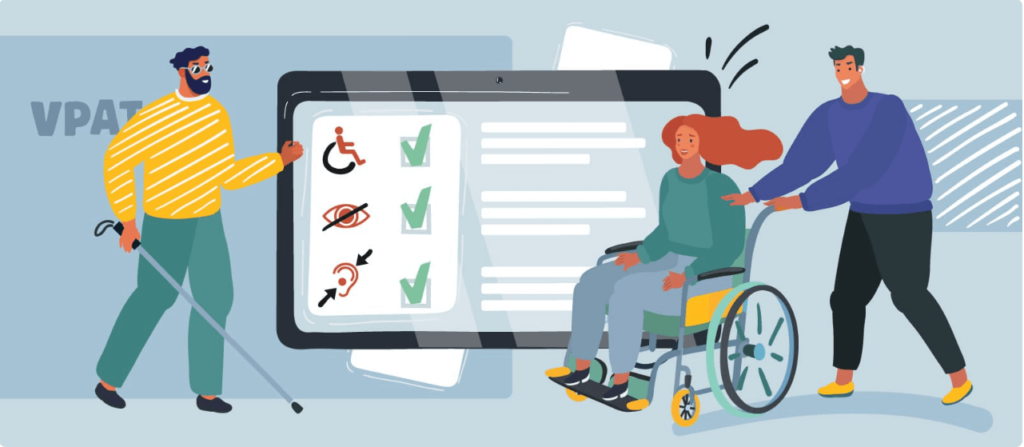Understanding the basics of VPAT compliance is vital for businesses aiming to create inclusive and accessible digital experiences. This comprehensive guide will explore the fundamental aspects of VPAT compliance. This will provide businesses with the knowledge and tools to navigate the complex landscape of accessibility standards and regulations. Whether you are a small startup or a multinational corporation, it helps to grasp the basics of VPAT compliance. It empowers you to enhance the accessibility of your products and services while complying with relevant legal requirements.
In today’s digital landscape, accessibility has become an essential aspect of conducting business. Ensuring digital accessibility for individuals with disabilities is vital as technology evolves and more services go online. This is where Voluntary Product Accessibility Template (VPAT) compliance comes into play. VPAT compliance helps businesses to evaluate and document the accessibility of their products and services. This will help enable them to meet the needs of a diverse user base.
Steps to VPAT Compliance

Implementing VPAT compliance involves several key steps. Here are five fundamental steps to guide you through the process:
Familiarize Yourself with Accessibility Standards and Regulations
Begin by understanding the accessibility standards and regulations that are relevant to your industry and geographic location. This includes guidelines such as WCAG, Section 508 of the Rehabilitation Act, and the Americans with Disabilities Act (ADA). Gain a solid understanding of the specific requirements and guidelines outlined in these standards.
Conduct an Accessibility Assessment
Perform a comprehensive accessibility assessment of your digital products or services. This involves evaluating various aspects, including website design, functionality, navigation, content, multimedia, and forms. Utilize accessibility testing tools and methodologies to identify areas of non-compliance or potential barriers for users with disabilities.
Create a VPAT Document
Develop a VPAT document that accurately reflects the accessibility features and limitations of your products or services. The VPAT document follows a standardized format and provides a clear overview of your compliance status. It describes how your product or service aligns with specific accessibility standards and regulations.
Address Accessibility Gaps
Once you have identified accessibility issues through the assessment, prioritize and address them systematically. Make the necessary modifications to your digital products or services to ensure they meet the required accessibility standards. This may involve improving website structure, providing alternative text for images, enhancing keyboard navigation, among other measures.
Regularly Update and Maintain Accessibility
Accessibility is an ongoing process. It is crucial to establish procedures for regular monitoring, updating, and maintaining accessibility in your digital offerings. Conduct periodic accessibility audits and assessments to identify new issues that may arise due to updates or changes in technology. Continuously educate your team and stakeholders about accessibility best practices to foster a culture of accessibility within your organization.
By following these five basic steps, businesses can establish a solid foundation for VPAT compliance. They can work towards creating inclusive and accessible digital experiences for all users, regardless of their abilities.
Conclusion
The basics of VPAT compliance is essential for businesses to create an inclusive and accessible experiences for all users. This guide presents a comprehensive overview of VPAT compliance, equipping businesses with the necessary knowledge and tools. They can use this to navigate the complex landscape of accessibility standards and regulations.
By embracing VPAT compliance, businesses can not only meet legal requirements but also reap numerous benefits. Prioritizing accessibility in digital products and services opens doors to a wider customer base. It enhances user experience, fosters customer loyalty, and strengthens the brand’s reputation as a socially responsible entity.
Now armed with the knowledge gained from this guide, it is time for businesses to take action. Embrace VPAT compliance, make accessibility a priority, and work towards creating digital experiences that leave no one behind. Together, we can forge a future where accessibility is the norm and empower individuals of all abilities to thrive in the digital landscape.









